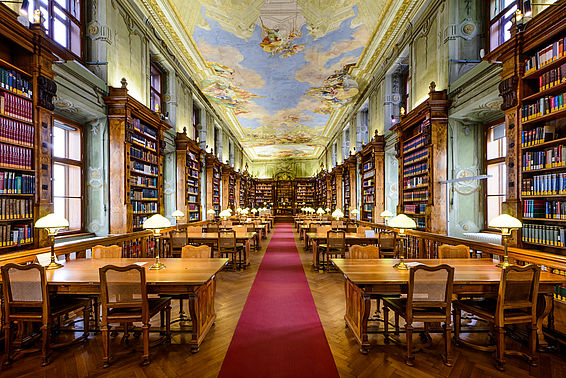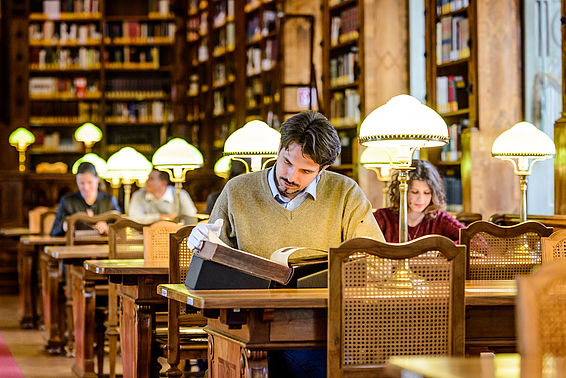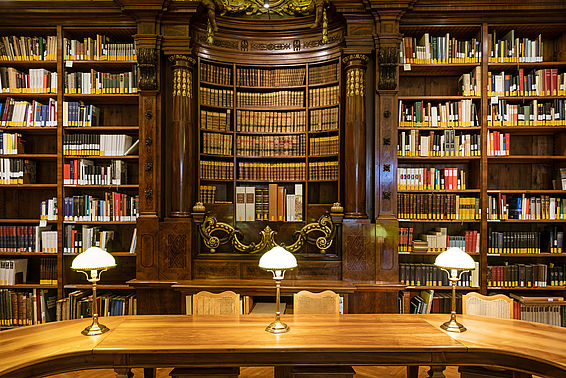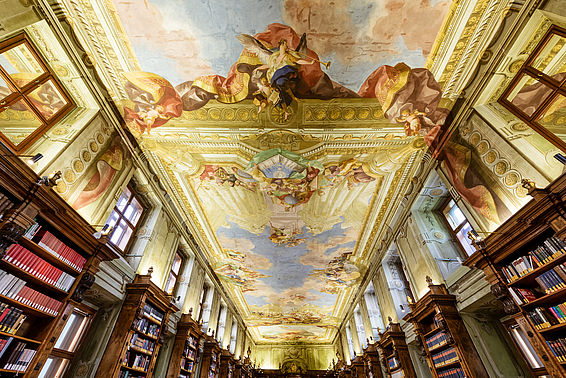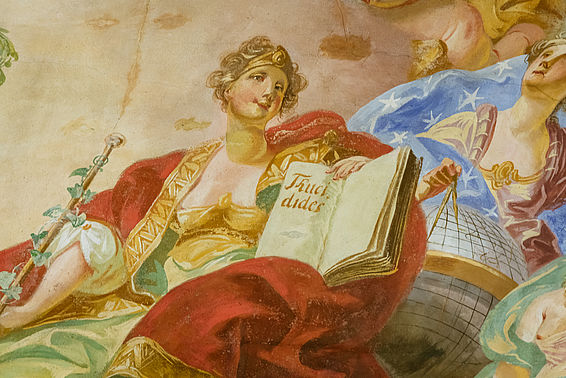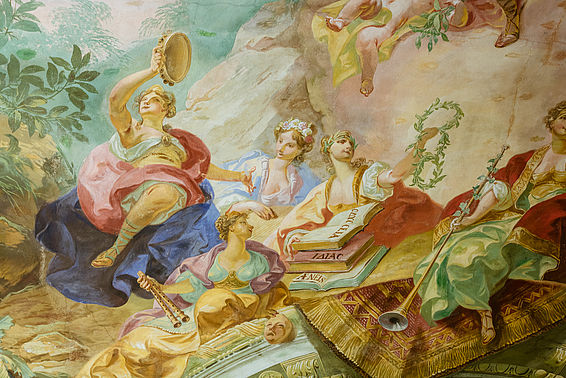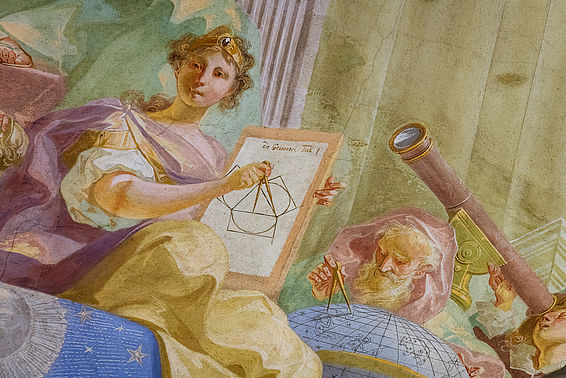Augustinian Reading Room
State-of the art equipment in a magnificent setting
Originally built as a monastery library for the Discalced Augustinians and, in 1829, rented by the former Court Library, the Augustinian Reading Room today offers you, as a reading room for the Department of Manuscripts and Rare Books, all the comforts of a modern library reading room (Wi-Fi, etc.) in a magnificent setting. In this room you may study historical and bibliophilerare books and manuscripts held by the Austrian National Library. You can search the holdings and the extensive range of special literature in the » QuickSearch catalogue. Selected items of literature concerning the holdings are available for you to peruse in the open-access area.
» Learn more about the history of the Augustinian Reading Room
You can also explore the Augustinian Reading Roomevery second Wednesday in a month as part of a » public guided tour.
The Augustinian Reading Room is accessible via the State Hall stairwell (Josefsplatz 1, 1010 Vienna, main entrance, 1st floor).
Ceiling fresco
The ceiling fresco, designed in 1773 by Johann Baptist Wenzel Bergl (1718–1789), a pupil of Paul Troger, is particularly remarkable.
The fresco follows a theme similar to the one in the adjacent State Hall, the former Court Library. It is not, as one might expect in a monastery library, dedicated to just one theological subject, but instead conveys the idea of universal erudition, combined with an imperial apotheosis. The three pictorial fields are to be read from the narrow side with the two windows towards the elevated section of the hall.
The three pictorial fields:
- The entirety of material, indeed earthly processes led by a great state
- The entirety of earthly teachings and arts in the form of the four faculties, the most sublime of which is theology
- Mount Parnassus as the entirety of celestial and absolute understanding
Each group is designed in the same way with a central figure as well as four to five flanking figures, respectively. Several character portraits stand out among the many shapes that turn away from the onlooker or have blurred, neutral facial features. Moreover, several old men can be seen wearing turbans, no doubt a reference to the fact that all areas of science stem partly from Arab sources in pre-ancient times. The onlooker’s attention between the scenes is drawn, above all, to the cloud formations.
Two cartouches with sayings along the narrow side serve to bracket the depictions of the ceiling fresco, as do the portrait medallions. Codices certa hora [singulis diebus]petantur from the Rule of St. Augustine (5.39) – Books may be obtained [daily] at certain times (requests are not accepted outside of these hours).
This practicality of daily life is contrasted by a spiritual level: Scrutamini Scripturas [quia vos putatis in ipsis vitam aeternam habere] from the Gospel of John tells the reader to find the right path to eternal life in the (Holy) Scripture.

